Beyond "What I Did on Vacation": Exploring the Genre of Travel Writing

- Resources & Preparation
- Instructional Plan
- Related Resources
In this lesson, students are introduced to the genre of travel writing. After reading and analyzing short examples and discussing conventions of the genre, students engage in some guided travel writing activities. They brainstorm events and/or personal experiences that might make a fun piece of travel writing and select one event for freewriting. They then turn their notes into a travel article, using a list of characteristics of good travel writing to assess their writing as they work. They peer review and revise drafts of their writing before publishing it using an online multigenre tool. This scalable lesson can be completed in a few days as a short mini-unit, before a school break as a chance for students to do some real world writing, or over a longer period of time as an extended unit with integrated research.

Featured Resources
- Elements of Good Travel Writing : This handout lists characteristics of good travel articles.
- Multigenre Mapper : Students can use this online tool to create multigenre, multimodal texts, including three types of writing and a drawing, in response to the Gettysburg Address.
- Suggested Reading in the Travel Writing Genre : This reading list includes books and magazines in the travel writing genre.
From Theory to Practice
In her book Thinking Through Genre , Heather Lattimer discusses genre study as "an inquiry into text form" (4). One of the ways to help students see the structural and rhetorical features of a piece of writing is to immerse them in the study of various genres. By studying a wide array of genres, students are better able to see the many decisions a writer makes as a matter of purpose, audience, and form or genre, rather than as arbitrary teacher-established rules. Lattimer suggests, "A genre study is not about reading a particular text; individual texts are read and discussed for the purpose of developing strategies of comprehension appropriate for the genre" (4). Dean states, "Even if we can't develop the full contextual aspect of some genres because of the restrictions of the classroom situation, it is helpful for students to know that not all writing is the same. They can learn the concept of genres." (45) By reading and writing in new genres, students gain strategies for reading new kinds of texts as well as insights into different ways of producing texts. Further Reading
Common Core Standards
This resource has been aligned to the Common Core State Standards for states in which they have been adopted. If a state does not appear in the drop-down, CCSS alignments are forthcoming.
State Standards
This lesson has been aligned to standards in the following states. If a state does not appear in the drop-down, standard alignments are not currently available for that state.
NCTE/IRA National Standards for the English Language Arts
- 1. Students read a wide range of print and nonprint texts to build an understanding of texts, of themselves, and of the cultures of the United States and the world; to acquire new information; to respond to the needs and demands of society and the workplace; and for personal fulfillment. Among these texts are fiction and nonfiction, classic and contemporary works.
- 4. Students adjust their use of spoken, written, and visual language (e.g., conventions, style, vocabulary) to communicate effectively with a variety of audiences and for different purposes.
- 5. Students employ a wide range of strategies as they write and use different writing process elements appropriately to communicate with different audiences for a variety of purposes.
- 6. Students apply knowledge of language structure, language conventions (e.g., spelling and punctuation), media techniques, figurative language, and genre to create, critique, and discuss print and nonprint texts.
- 12. Students use spoken, written, and visual language to accomplish their own purposes (e.g., for learning, enjoyment, persuasion, and the exchange of information).
Materials and Technology
- Suggested Reading in the Travel Writing Genre
- Sample Piece of Travel Writing: “The Visit” (or substitute with your own piece if you prefer)
- Computer with Internet access
- Analysis of Travel Writing
- Elements of Good Travel Writing
Preparation
- Read and the Analysis of Travel Writing and note how the characteristics apply to “ The Visit .”
- Consider how travel writing might fit into your larger conversations with students about writing. For example, using travel writing as part of a genre approach to teaching writing can allow teachers to compare and contrast it with other forms of writing. There is a strong overlap between travel writing and personal narrative, as good travel writing centers on good stories and engaging voice and style. Mixed in with that, however, is the description and informational aspects of expository writing. Travel writing also often overlaps with persuasive writing, making emotional appeals to entice readers to take particular sorts of trips. Seeing travel writing as a hybrid genre not only will give students an additional form to work in; it will help them see aspects of familiar forms by comparison.
- Make one copy of the Analysis of Travel Writing and Elements of Good Travel Writing for each student.
- Test the Multigenre Mapper on your computers to familiarize yourself with the tool and ensure that you have the Flash plug-in installed. You can download the plug-in from the technical support page .
Student Objectives
Students will:
- learn the conventions of the travel writing genre.
- attempt new methods of generating personal writing.
- practice process-based writing and writing for an audience.
- integrate research with personal experiences and reflection.
Session One
- Ask students what they know about travel writing and what they expect to find in travel writing. List their comments on the board or on chart paper. Save this information for use later in the session.
- Hand out copies of “ The Visit ,” or have students access it online. Alternately, you can share another piece of travel writing with students from your class textbook or another source.
- Hand out copies of the Analysis of Travel Writing to each student.
- Have students read “ The Visit ” and then answer the questions on the Analysis of Travel Writing , either individually or in small groups.
- Discuss the article and student responses to the Analysis of Travel Writing handout.
- Ask students to compare that they found in the reading with their observations and expectations at the beginning of the session. Encourage exploration of the similarities and differences.
- Hand out a Elements of Good Travel Writing to each student, and discuss these elements as they apply to the reading.
Session Two
- Review the Elements of Good Travel Writing handout from the previous session.
- Have students watch the short clip " Developing Travel Writing " from BBC.
- When they finish reading, ask students to brainstorm a list of events and/or personal experiences that might make a fun piece of travel writing.
- Give students a few minutes to share their lists with their peers.
- Have students select one event from their lists and write down, using freewriting and brainstorming techniques, everything they can about it during the remainder of the session. If time is short, have students complete their notes for homework. Ask them to bring their notes to the next session.
Session Three
- Allow students a few minutes to review their notes from the previous session and make any changes or additions.
- Explain that these notes are source material for students’ own travel articles.
- Have students compare their notes to the Elements of Good Travel Writing . Ask them to identify any characteristics that are not present in their work or that need to be strengthened.
- Try for a clever attention grabber (explain that this may be the last or most difficult part).
- Give enough background information to set the context: Where were you? Why were you there? Why was this event important?
- Clearly describe the setting. Use details that appeal to multiple senses.
- Clearly describe an important person (alternately, an animal or thing) in the story. Make sure that your reader will understand who the key people are in the article.
- Look for places where you can add dialogue. If the event happened a long time ago, dialogue does not have to be direct quotations. Suggest students focus on the general comments and feelings in their dialogues.
- Mix in personal reflections with the telling of the story.
- Ask students to bring a completed draft of their travel article to the next class session for peer review.
Session Four
- Have students share their revised drafts in small groups of two to four students.
- Ask peers to evaluate the articles by comparing their characteristics to the Elements of Good Travel Writing .
- Encourage students to share supportive feedback and praise as well.
- Have students revise their work using feedback from their peers to create a final draft.
- If desired, allow time for students to publish their travel writing using the Multigenre Mapper to incorporate drawings into their final work.
- Have students research the location in their writings and then incorporate relevant information into the finished versions.
- Read additional travel writing. Some suggestions are included on the Suggested Reading in the Travel Writing Genre handout.
- General interest magazines often carry travel pieces as well. Discuss the kinds of travel writing that are included in non-travel magazines such as Cottage Living and the differences between these and articles found in travel magazines such as National Geographic Traveler . Use this comparison as a basis for a discussion of audience and purpose.
- For some additional ways to write about travel, consult Ten Ways to Write about Your Vacation , which includes writing prompts that can be used as starting points or as more polished pieces.
Student Assessment / Reflections
- Assess students’ finished travel writing by comparison to the genre conventions established during discussion and in the Elements of Good Travel Writing . Finished pieces can be shared with peers, family, and/or the school at large via a “travel” edition of a school publication.
- Calendar Activities
- Student Interactives
- Professional Library
Students read a section from On the Road that deals with cross-country travel and reflects Kerouac's unique writing style. Students then attempt to write a narrative using Kerouac's stream-of-consciousness style.
Families are invited to a June literacy fair to end the school year and get students on the right track for the summer.
This interactive invites students to create original multigenre, multimodal works--one drawing and three written texts--making the tool flexible for multiple writing activities.
- Print this resource
Explore Resources by Grade
- Kindergarten K
- Primary Hub
- Art & Design
- Design & Technology
- Health & Wellbeing
- Secondary Hub
- Citizenship
- Primary CPD
- Secondary CPD
- Book Awards
- All Products
- Primary Products
- Secondary Products
- School Trips
- Trip Directory
- Trips by Subject
- Trips by Type
- Trips by Region
- Submit a Trip Venue
Trending stories
Top results.

- Teaching Resources
- Travel Itinerary
Human geography KS2 – Plan the ideal holiday

PDF lesson plan and worksheet
Ready for a holiday? This human geography KS2 lesson plan tasks your pupils with the job of creating the perfect vacation itinerary. This should include places of interest, hotels, flights and restaurant recommendations.
This lesson focuses on human geography and tourism as pupils research, price up and pitch to your brief. It’s an engaging way to study the tourism of another locality in a real-life, purposeful context. Plus, travel planning is a useful real-world skill for pupils to learn.
Human geography KS2 learning objectives
- Learn about human geography and tourism in a chosen location
- Identify significant places of interest and customs of another locality
- Discover where and how to gather geographical information
Starter activity
Ahead of the lesson, you’ll need to devise a brief for your imaginary holiday. Investigate possible options to help you to support pupils in the lesson, including departure and arrival airports, month of travel and holiday duration.
The aim of this lesson is learning about tourism and human geography, so focus your brief on the excursions, attractions and local cuisine you want to experience.
Introduce pupils to the idea that they are now travel agents. Present them with your inquiry and ask them for their ideas about how they will respond to this.
Where will they look? How will they make decisions? What do they already know?
Adam Jevons-Newman is KS2 and curriculum leader at Farmilo Primary School and Nursery in Nottinghamshire.
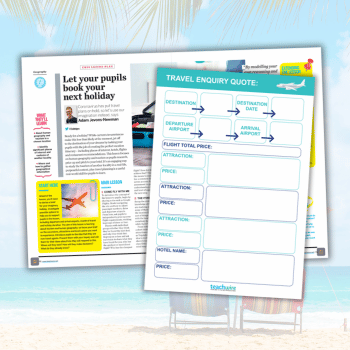
Similar resources
- Stone Age art – Explore ancient symbols via an encyclopedia
- The Fate of Fausto – KS2 planning for this Oliver Jeffers book
- Rivers KS2 – Innovative lesson plans all about rivers
- Countries lesson plan – Nations & territories KS2 geography topic
- Climate change KS2 – Scheme of work & experiments
Sign up to our newsletter
You'll also receive regular updates from Teachwire with free lesson plans, great new teaching ideas, offers and more. (You can unsubscribe at any time.)
Which sectors are you interested in?
Early Years
Thank you for signing up to our emails!
Explore teaching packs

Why join Teachwire?
Get what you need to become a better teacher with unlimited access to exclusive free classroom resources and expert CPD downloads.
Exclusive classroom resource downloads
Free worksheets and lesson plans
CPD downloads, written by experts
Resource packs to supercharge your planning
Special web-only magazine editions
Educational podcasts & resources
Access to free literacy webinars
Newsletters and offers
Create free account
By signing up you agree to our terms and conditions and privacy policy .
Already have an account? Log in here
Thanks, you're almost there
To help us show you teaching resources, downloads and more you’ll love, complete your profile below.
Welcome to Teachwire!
Set up your account.
Lorem ipsum dolor sit amet consectetur adipisicing elit. Commodi nulla quos inventore beatae tenetur.
I would like to receive regular updates from Teachwire with free lesson plans, great new teaching ideas, offers and more. (You can unsubscribe at any time.)
Log in to Teachwire
Not registered with Teachwire? Sign up for free
Reset Password
Remembered your password? Login here


Kids travel journals: what’s the best format?
Posted on Last updated: 25 March 2024

Kids travel journals are a fantastic tool for enabling children to record their adventures and a great way to practice their writing skills when on the road. They are an absolute must-have for all worldschoolers . We often use them on our travels for downtime or to fill time whilst waiting for public transport or meals at restaurants. Plus, what an wonderful memento for you all to look back on in years to come.
As a parent, it’s always interesting seeing what’s noteworthy for our boys with their travels. Often it’s the seemingly mundane things like an ice-cream or a piece of rubbish (sorry, treasure) they’ve collected that feature, then other days it’s a unique interaction with somebody new, or a funny story.
Over the years, we’ve used all different types of kids travel journals. So after numerous messages asking me for my advice on travel journals, I thought it was about time I shared my recommendations and thoughts on what we’ve used in the past.
Disclaimer: This post contains affiliate links. If you click to purchase, it is at no additional cost to you, and I receive a small commission.
1. Kids travel journals with repeated pages
If you type ‘kids travel journal’ into Amazon search , the list of results are exhaustive and it can be overwhelming deciding on which one suits your kid best.
Most journals featured on this list have the same idea; a page (or double page) with an engaging layout of boxes and prompts for kids to complete. This more often than not includes destination, date, weather, what they did that day, etc.
These journals are great for keeping records of short trips in the one place. But for long-term travel, they in all honesty get rather monotonous. There’s a lot to enter for each day and if the kids don’t fancy completing it all, there are big gaps that they may go back to complete, but more than likely are left blank.
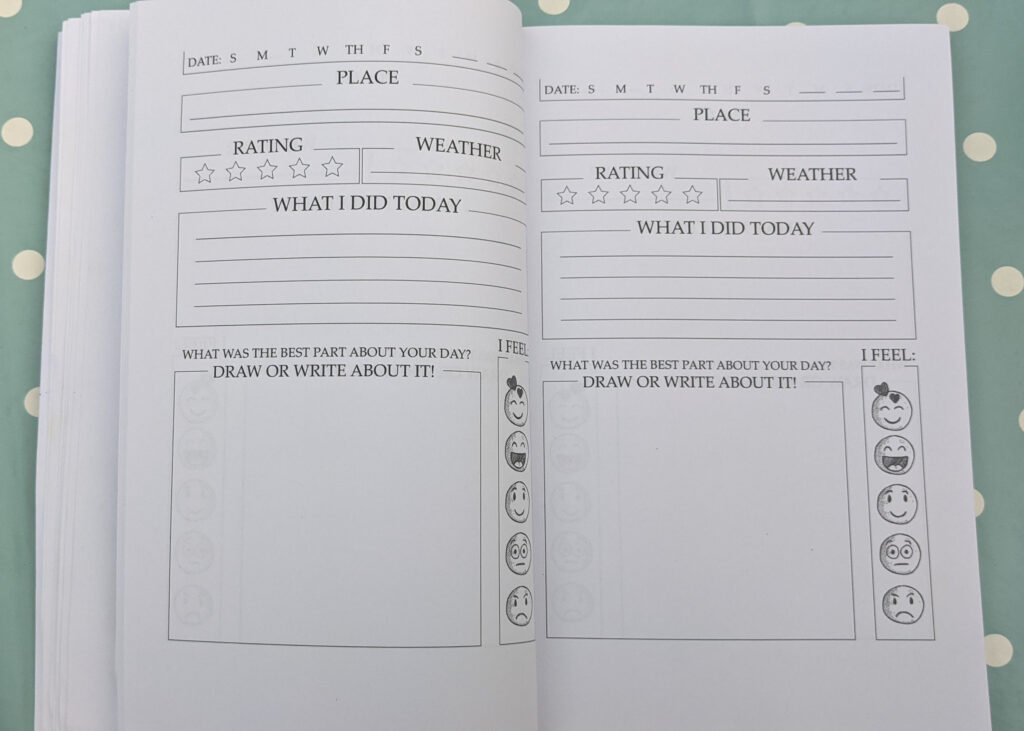
The exact same layout every day may limit some children and it can get rather dull doing the same entries day in, day out, for long-term travellers.
We have used kids travel journals like this for our summers travelling France in our Bongo camper for six weeks at a time. The boys would start these journals with good intentions and keep them regularly updated to begin with but, over the weeks, enthusiasm wanes.

However, I do think there is a place for this type of journal. There’s something satisfying about looking through and comparing journal entries with the same layout, and I think they work perfectly for shorter trips. In fact, I sell kids log books for walks on my Peak District Kids site that follows this exact format.
2. Kids travel journals with different prompts on every page
For our 4 months in Morocco , we decided to take a different approach to the kids’ travel journals.
As we deregistered the boys from school for a term, we wanted to keep on top of their schooling (which includes writing). We enlisted the boys to online schooling to cover maths and English, but obviously online English doesn’t lend itself well to handwriting.
A kids travel journal is the perfect tool for travelling kids to practice their handwriting, but it needs to be a journal that goes the distance; you don’t want to be nagging them to continue their journaling just a couple of weeks into the trip.
So I bought them each the Lonely Planet Kids’ Travel Journal .

This is a brilliant kids travel journal which has clearly had a lot of thought put into it, but costs the same as the travel journals with repeated pages.
Every page is different and there are pages to complete both before and after their travels, as well as during, including a page to draw items in their suitcase, pages to stick tickets as ‘ticket towers’, a flag page, faces to draw of people they’ve met, as well as writing pages with prompts such as, ‘List what makes you happy today’, ‘Where have your feet stood today?’, ‘What was the first thing you saw when you opened your eyes this morning?’

- Baxter, Nicola (Author)
- English (Publication Language)
- 72 Pages – 04/15/2016 (Publication Date) – Lonely Planet Kids (Publisher)
This has become the most complete kids travel journal the boys have ever done to date, and there are 72 pages. I also like the hardback cover, which means it survives being thrown and squished into the kids travel backpacks .

However, as every page is different, there’s no flow to the journal. My boys ended up jumping to the page that matched what they wanted to journal about that day, which is absolutely fine as it encouraged them to journal more. However, looking back on it now, the journal doesn’t flow with our adventure.
3. A bog standard notebook
Something that I’ve learned from the boys’ journaling on our Morocco trip is that they wanted to journal differently every day (or rather, a few times per week). Hence why the Lonely Planet Kids’ Travel Journal worked so well. Sometimes there’s not much more to say than, ‘we sat on a bus all day’, with a ticket stuck into the journal, and other days they want to write a full essay about a group of kids they met in a playground. After a major sightseeing day, they may be exhausted and just want to stick in a postcard with a few facts learned from the day. Plus, Ez likes doodling, Arthur prefers to write lists, and neither enjoy colouring in.
Flexibility is key when it comes to travelling with kids, and this really goes with kids journaling too. For our long term trips I don’t expect them to journal every day, but I do expect them to keep a journal and want to encourage their creativity.
Above all, I really want us to look back on these journals and there be an easy, logical flow. Long term travels tend to unfold as each day passes; the beginning of a trip is always different to the end, and as individuals we grow and change through this process.
So for our 10-week trip to Southeast Asia I went for a bog standard notebook. This is the notebook: Avery A5 Lined Notizio Medium Wirebound Notebook

- Innovative light grey paper with white lining. No distraction due to dark lines or squares – the…
- And the best bit: guide lines are invisible with photocopying, scanning or faxing. The…
- The colour-contrasting elastic band fastener keeps notes together
- Transferable polypropene plastic register for flexibly structuring your notes The book can be…
- Document case for storing loose sheets and more
There are 90 pages, the hard-wearing cover means it’s robust, and it comes with plastic dividers to separate the notebook into sections. The lines are also soft enough so you can draw over them.
I’m also planning this to be their notebook to accompany online schooling, as this is a huge part of their journey and equally as interesting to look back on. Their ‘online schooling’ notebook was separate for their Morocco travels, but one book to carry and look after is always easier than one, right?
This is the notebook the boys used for their online schooling work whilst in Morocco. It was handy having one side blank and the other lined.

- PREMIUM SLOTH DESIGN NOTEBOOK – Brought to you by Printykins UK, this Sloth inspired notebook is an…
- WHAT MAKES THIS NOTEBOOK SO GREAT & UNIQUE – Due to the fun, witty Sloth themed background not only…
- MULTI USE – With both plain and lined / ruled pages this jotta can be used as both a sketchbook…
- SIZE – The notebook is A5 / 21cm x 15cm size which makes this pad ideal to carry around with you…
- OTHER DETAILS – The notebook is presented on high quality paper (90GSM stock paper) enabling…

The intention with the notebook format is to give them free reign to journal about what they want, and keep everything in the same place (school work and journaling). I don’t really mind what they’re journaling about, as long as they’re actually journaling.
I’ll report back with how it goes…
UPDATE: The notebook worked brilliantly! The boys wrote more than they ever have previously in their journals and managed a daily entry for every day of the trip, except the last few days. Definitely taking this approach next time.
Final thought on kids travel journals
There are so many kids travel journals on the market and it can be overwhelming to work out which is the right one for your child. Every child is different, but over the years I’ve realised that a flexible layout works best for my kids.
The format of kids travel journals can be separated into three types:
- Kids travel journals with repeated pages These are good if you’re a family who do lots of short trips, but can feel rather monotonous for long-term travellers. However, it’s nice to look back at memories that follow the same format.
- Kids travel journals with different prompts on every page These are fantastic for those big trips lasting a month or longer. There are so many different prompts to maintain engagement and encourage a full journal by the end of the trip, but the memories won’t be linear when you look back in years to come.
- A bog standard notebook Keeps it simple and allows for maximum flexibility that is perhaps better suited to long-term travel families. However, this perhaps isn’t quite as fun for younger kids.
Whichever kids travel journal you choose, always pack a glue stick and scissors so you can add in tickets, labels and postcards collected along the way. Sometimes, just a couple of words next to whatever is stuck in, is enough to jog the memories in years to come.
You may also like to read: Best travel backpacks for kids Our top family travel destinations for intrepid families Unpaid Parental Leave: taking leave from work to travel with your kids
- News for Kids
- Dominican Republic
- Netherlands
- New Zealand
- Papua New Guinea
- Philippines
- Puerto Rico
- Solomon Islands
- South Africa
- South Korea
- Switzerland
- United Arab Emirates
- United Kingdom
- United States of America
- 7 Continents
- Australia/Oceania
- North America
- South America
- Chinese New Year
- Elections 2024
- Olympics 2024
- European Union
- Trivia & Quizzes
- Solar System Quiz
- Travel Reviews
- Travel Health
- Travel Links
Competition 2024
- Winners 2023
- Winners 2022
- Winners 2021
- Winners 2020
- Winners 2019
- Request A Correction
Welcome to Kids World Travel Guide!
A unique Kids World Travel Guide for Kids and Parents, for Children, Students and Teachers
Our Kids World Travel Guide shall tell you about countries and people and will provide great tips and advice for your family holidays around the world.
See the World through Children’s Eyes
In this world travel guide for kids the travel information for children was researched thoroughly by parents and children who love to travel.
What you will find on Kids World Travel Guide
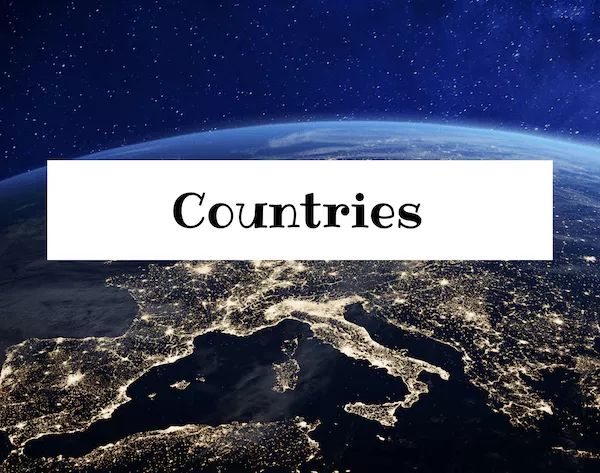
Why Kids World Travel Guide?
Children are naturally very curious about new countries and are excited to learn new things and always want to know more about the interesting places you can visit, the food you will taste or the activities you can enjoy abroad.
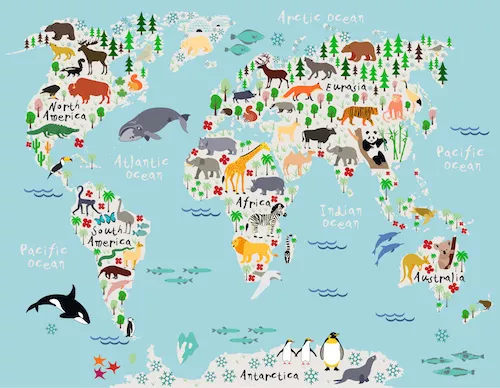
Children always want to kn ow more than the usual facts about a country and here you will discover exciting travel facts and find some astonishing answers to kids questions like these:

Did you know the answers?
Our kids travel guide online information does not only cover the basic travel facts and the main attractions of the world’s countries, but it will explain the foreign country’s cultures and customs for children and will help your kids to gain a better understanding of the new cultures.
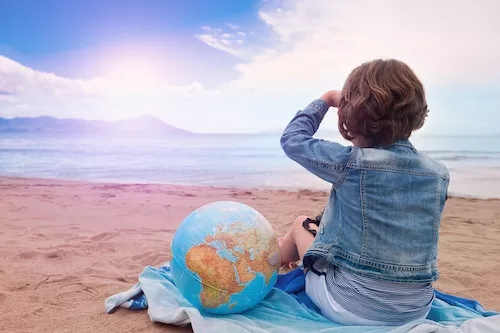
Our kids guide will showcase the work of a large cohort of pupils and teachers in private and public schools and homeschoolers around the world. On the Kids World Travel Guide and KWTGNews platforms we share country guides, kids news, kids travel stories, kids interviews and kids travel experiences and so much more.
Win - win - win Join our annual writing competition
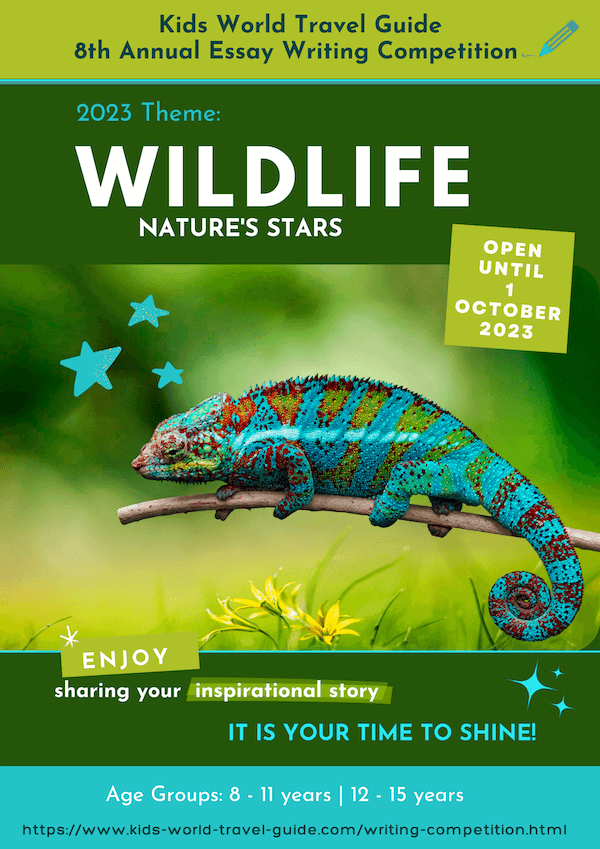
On this Children's Travel Guide site you will also find many pictures about life in the different countries - taken by pupils and parents travelling the worlds as well as professional photographers.
To help visualise we have access to the Shutterstock photo stock platform. There are many photos of the wildlife, population, attractions, food, customs, festivals , holiday activities for kids as well as a kids world map and flags for children, many fun quizzes and travel trivia questions for kids, so let us know if you miss anything.
This family travel guide is based on a unique travel guide concept: This guide is written and maintained by children, parents and teachers for children, their parents and teachers.

Parents who want to prepare their kids and teenagers for travels anywhere in the world will find child-adequate information in our guide. And there is a big section on travel planning and travelling with children in it for the parents as well.
So travel around the world with us and have fun to explore the world with our
Kids World Travel Guide
Enjoy, join in and share!
Popular Pages
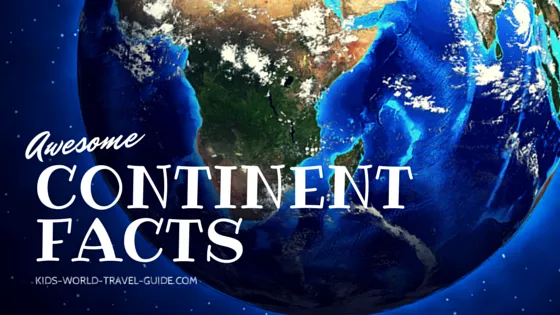
Recent Articles

Germany Facts | Facts for Kids | Geography | Travel | Attractions
Sep 19, 24 06:28 AM
Latvia Facts for Kids | Geography | Facts about Latvia | Baltics
Sep 17, 24 10:42 AM
Togo Facts for Kids | Facts about Togo for Kids | Geography | Africa
Sep 13, 24 08:25 AM
Pacific Ocean Facts for Kids | Geography | Pacific Ocean for Kids
Sep 06, 24 10:07 AM
Facts about Tuvalu for Kids | Tuvalu Oceania | Geography | Pacific
Sep 06, 24 09:53 AM
Estonia Facts for Kids | Geography | Facts about Estonia | Baltics
Sep 03, 24 10:31 AM
Baltic Sea Facts for Kids | Geography | Baltic Region | Atlantic Ocean
Aug 30, 24 07:43 AM
Lithuania Facts for Kids | Geography | Facts about Lithuania | Baltics
Aug 29, 24 10:54 AM
Baltic States Facts for Kids | Baltic Countries for Kids | Geography
Aug 26, 24 11:17 AM
KidsWorldTravels is an education consultancy based in Cape Town/South Africa.
Competition 2024 is open!
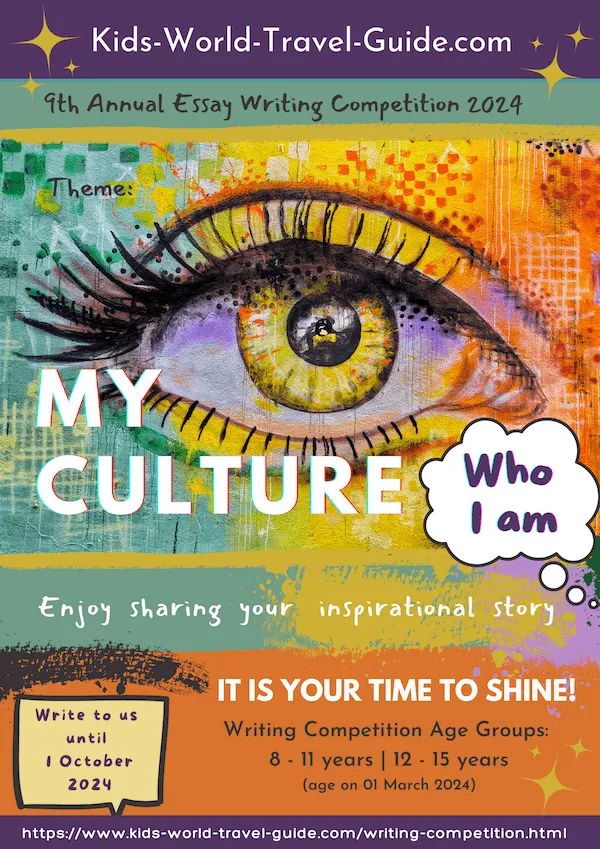
Events & Celebrations
Organisations, games & quizzes, travel tips, competition, join our schools' project.
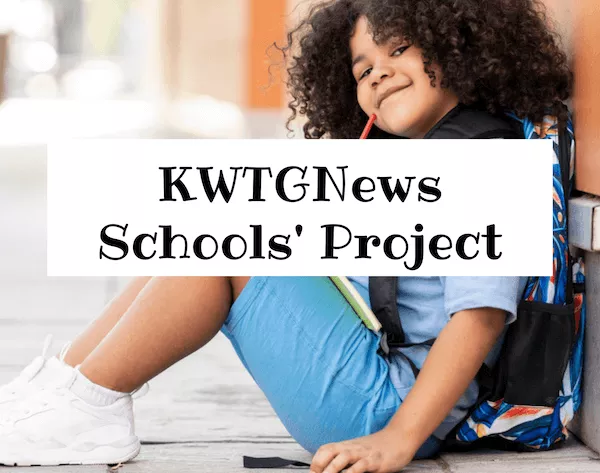
Follow us on Facebook
Kids World Travel Guide
Like what you read?

Animals around the World
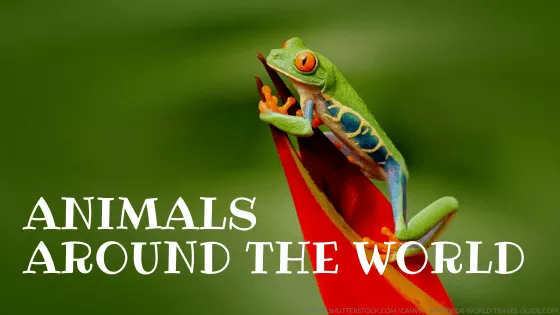
KidsWorldTravels Travel Guides

Winning Essays 2021
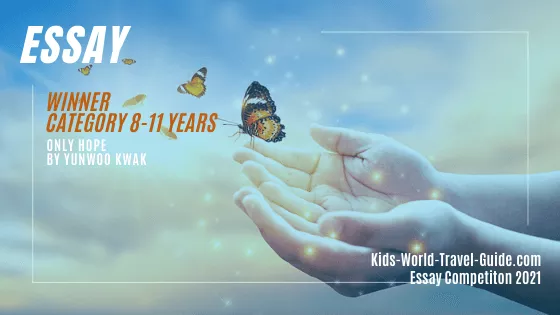
Winning Essays 2022
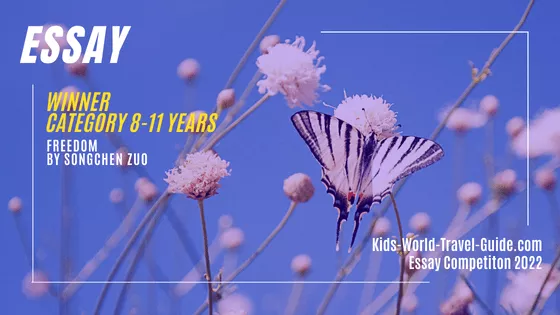
Brilliantly
Content & links.
Verified by Sur.ly
©Kids-World-Travel-Guide.com 2010-2024 | Created by Regina Gräff and KidsWorldTravels
All rights reserved | Privacy Policy | Disclaimer


- DIGITAL MAGAZINE
MOST POPULAR
Space Week primary resource
This Space Week primary resource introduces children to life on the International Space Station; the complexities of space suit design, and the possibility of life on Mars. What do astronauts eat in space? In what year is the first manned mission to Mars planned? Which everyday household objects have been inspired by space technology?
Pupils will have the opportunity to consider the history and future of space travel using our National Geographic Kids’ Space primary resource sheet.
The teaching resource can be used in study group tasks, as a printed handout for each pupil, or for display on the interactive whiteboard.
Activity: Ask children to imagine they are going on a journey to Mars and to write a diary of their adventure using the information provided. Pupils could use the information to make their own ‘guide to space travel’ booklet or leaflet. Pupils could use their research to write a more detailed factsheet about their favourite space fact from the sheet, or as a class, they could make a timeline of space travel for display in the classroom.
N.B. The following information for mapping the resource documents to the school curriculum is specifically tailored to the English National Curriculum and Scottish Curriculum for Excellence . We are currently working to bring specifically tailored curriculum resource links for our other territories; including South Africa , Australia and New Zealand . If you have any queries about our upcoming curriculum resource links, please email: [email protected]
This Science primary resource assists with teaching the following Upper Key Stage 2 Science (Year 5) objectives from the National Curriculum :
Pupils should be taught to:
- describe the movement of the Earth, and other planets, relative to the Sun in the solar system
Pupils should learn that the Sun is a star at the centre of our solar system and that it has eight planets: Mercury, Venus, Earth, Mars, Jupiter, Saturn, Uranus and Neptune (Pluto was reclassified as a ‘dwarf planet’ in 2006).
This Science primary resource , this resource assists with teaching the following Sciences Early level objectives from the Scottish Curriculum for Excellence :
- I have experienced the wonder of looking at the vastness of the sky, and can recognise the sun, moon and stars and link them to daily patterns of life.
Scottish Curriculum for Excellence Sciences First level objectives :
- By safely observing and recording the sun and moon at various times, I can describe their patterns of movement and changes over time. I can relate these to the length of a day, a month and a year.
Scottish Curriculum for Excellence Sciences Second level objectives :
- By observing and researching features of our solar system, I can use simple models to communicate my understanding of size, scale, time and relative motion within it.
Scottish Curriculum for Excellence Sciences Third level objectives :
- By using my knowledge of our solar system and the basic needs of living things, I can produce a reasoned argument on the likelihood of life existing elsewhere in the universe.
Scottish Curriculum for Excellence Sciences Fourth level objectives :
- By researching developments used to observe or explore space, I can illustrate how our knowledge of the universe has evolved over time.
Download primary resource
Leave a comment.
Your comment will be checked and approved shortly.
WELL DONE, YOUR COMMENT HAS BEEN ADDED!
Customize your avatar.

Win: new series from the creator of Dork Diaries!

Free coding projects!

The Parent Agency: 10th Anniversary Edition!

Check out Hamish and the Gravity Burp!

Sign up to our newsletter
Get uplifting news, exclusive offers, inspiring stories and activities to help you and your family explore and learn delivered straight to your inbox.
You will receive our UK newsletter. Change region
WHERE DO YOU LIVE?
COUNTRY * Australia Ireland New Zealand United Kingdom Other
By entering your email address you agree to our Terms of Use and Privacy Policy and will receive emails from us about news, offers, activities and partner offers.
You're all signed up! Back to subscription site
Type whatever you want to search
More Results

You’re leaving natgeokids.com to visit another website!
Ask a parent or guardian to check it out first and remember to stay safe online.

You're leaving our kids' pages to visit a page for grown-ups!
Be sure to check if your parent or guardian is okay with this first.
History of Space Travel
Learn about the history of humans traveling into space.
The first earthling to orbit our planet was just two years old, plucked from the streets of Moscow barely more than a week before her historic launch. Her name was Laika. She was a terrier mutt and by all accounts a good dog. Her 1957 flight paved the way for space exploration back when scientists didn’t know if spaceflight was lethal for living things.
Humans are explorers. Since before the dawn of civilization, we’ve been lured over the horizon to find food or more space, to make a profit, or just to see what’s beyond those trees or mountains or oceans. Our ability to explore reached new heights—literally—in the last hundred years. Airplanes shortened distances, simplified travel, and showed us Earth from a new perspective. By the middle of the last century, we aimed even higher.
Our first steps into space began as a race between the United States and the former Soviet Union, rivals in a global struggle for power. Laika was followed into orbit four years later by the first human, Soviet Cosmonaut Yuri A. Gagarin. With Earth orbit achieved, we turned our sights on the moon. The United States landed two astronauts on its stark surface in 1969, and five more manned missions followed. The U.S.’s National Aeronautics and Space Administration (NASA) launched probes to study the solar system. Manned space stations began glittering in the sky. NASA developed reusable spacecraft—space shuttle orbiters—to ferry astronauts and satellites to orbit. Space-travel technology had advanced light-years in just three decades. Gagarin had to parachute from his spaceship after reentry from orbit. The space shuttle leaves orbit at 16,465 miles an hour (26,498 kilometers an hour) and glides to a stop on a runway without using an engine.
Space travel is nothing like in the movies. Getting from A to B requires complex calculations involving inertia and gravity—literally, rocket science—to "slingshot" from planet to planet (or moon) across the solar system. The Voyager mission of the 1970s took advantage of a rare alignment of Jupiter, Saturn, Uranus, and Neptune to shave off nearly 20 years of travel time. Space is also dangerous. More than 20 astronauts have died doing their job.
That hasn’t stopped people from signing up and blasting off. NASA’s shuttle program has ended, but private companies are readying their own space programs. A company called Planetary Resources plans to send robot astronauts to the Asteroid Belt to mine for precious metals. Another company named SpaceX is hoping to land civilian astronauts on Mars—the next human step into the solar system—in 20 years. NASA and other civilian companies are planning their own Mars missions. Maybe you’ll be a member of one? Don’t forget to bring your dog.
Space videos
Outer this world, planet earth, calling all earthlings, the milky way, shoot for the stars, what is hubble, how hubble works, read this next, total solar eclipse.
- African American Heroes
Katherine Johnson
- Action and Adventure
Space Explorer
- Terms of Use
- Privacy Policy
- Your California Privacy Rights
- Children's Online Privacy Policy
- Interest-Based Ads
- About Nielsen Measurement
- Do Not Sell My Info
- National Geographic
- National Geographic Education
- Shop Nat Geo
- Customer Service
- Manage Your Subscription
Copyright © 1996-2015 National Geographic Society Copyright © 2015-2024 National Geographic Partners, LLC. All rights reserved
Advertisement
‘Uncommitted’ Group Says It Won’t Endorse Harris Over Gaza Concerns
As the vice president was set to travel on Thursday to Michigan, home to many Muslim and Arab Americans, a leading group protesting U.S. support of Israel said she had not done enough to win its backing.
- Share full article

By Erica L. Green
Reporting from Washington
- Sept. 19, 2024 Updated 8:28 a.m. ET
As Vice President Kamala Harris prepared to visit Michigan on Thursday, the national group that mobilized primary voters to cast “uncommitted” ballots against President Biden over the United States’ support for Israel in the war in Gaza announced that it would not endorse her.
The group, the Uncommitted National Movement, which started in Michigan and has become a national organization, said the decision had come after Ms. Harris failed to respond to its request for her to meet with Palestinian American families who have lost loved ones in Gaza, and for her to discuss the group’s demands for halting arms shipments to Israel. The group said it had asked for a response by Sept. 15.
“Vice President Harris’s unwillingness to shift on unconditional weapons policy or to even make a clear campaign statement in support of upholding existing U.S. and international human rights law has made it impossible for us to endorse her,” the organization said in a statement provided to The New York Times.
Ms. Harris is scheduled to appear at a campaign event on Thursday with Oprah Winfrey in a Detroit suburb, her third trip to Michigan since entering the presidential race. The crucial battleground state has one of the country’s largest populations of Arab American voters, and many of them were among the more than 100,000 people to cast “uncommitted” votes against Mr. Biden in Michigan’s primary election in February. Hundreds of thousands more Americans cast similar protest votes in states across the country.
In its statement, the Uncommitted National Movement urged its members to vote against former President Donald J. Trump, who it said had “bragged about accelerating the genocide against Palestinians and promised to intensify the suppression of pro-Palestinian activism in the U.S.” The group also urged members not to vote for a third-party candidate, saying that could help Mr. Trump win.
The endorsement decision was not a surprise: Tensions between the group and Ms. Harris’s campaign have spilled into public view. Last month, when two Uncommitted leaders briefly spoke with her and asked for a meeting to discuss the group’s demands for an arms embargo, her campaign downplayed the interaction, and her national security adviser made it clear that Ms. Harris did not support an arms embargo.
Organizers of the Democratic National Convention last month denied the group’s request for a speaker of Palestinian descent at the event, which featured the parents of a dual Israeli American citizen who was taken hostage by Hamas during its Oct. 7 attack. (The citizen, Hersh Goldberg-Polin, was among six hostages whose bodies were found in a tunnel in Gaza on Aug. 31.) Uncommitted supporters held a sit-in protest outside the convention instead.
The endorsement decision does, however, signal frustration among some Democratic voters who are sympathetic to the Palestinian cause and who had been cautiously optimistic that a Harris presidency could meaningfully change the United States’ approach toward Israel. The war has killed more than 40,000 Palestinians, according to Gaza health officials, and continues to cause a humanitarian calamity.
In its announcement, the Uncommitted group pointed to Ms. Harris’s recent support from prominent Republicans , accusing her campaign of “courting Dick Cheney while sidelining disillusioned antiwar voices, pushing them to consider third-party options or to sit this important election out.”
“We are proud to have grown our movement, even as our government continues to send bombs that destroy families,” the statement said. “Our organizing around the presidential election was never about endorsing a specific candidate; it has always been about building a movement that saves lives.”
Among top officials in the Biden administration, Ms. Harris has been the most sympathetic about the plight of Palestinians, and among the most forceful in criticizing Israel’s conduct in the war. But she has been reluctant to signal that she would back up those sentiments with a significant shift in U.S. foreign policy if she wins the presidency.
In an interview this week with members of the National Association of Black Journalists , Ms. Harris was pressed repeatedly for specifics on how she would handle the Israeli-Palestinian conflict. She largely reiterated the Biden administration’s positions.
On the issue of weapons, Ms. Harris said she supported Mr. Biden’s decision this year to pause shipments of 2,000-pound bombs , which he acknowledged had been used to kill civilians. But when the vice president was pushed for her own position on the war, she pointed repeatedly to a deal the Biden administration has struggled to broker between Israel and Hamas to institute a cease-fire in exchange for hostages held in Gaza.
“We need to get this deal done, and we need to get it done immediately,” she said. “And that is my position, and that is my policy. We need to get this deal done.”
Erica L. Green is a White House correspondent, covering President Biden and his administration. More about Erica L. Green
- International
- Education Jobs
- Schools directory
- Resources Education Jobs Schools directory News Search

Travel Writing - Travel Blogs
Subject: English
Age range: 11-14
Resource type: Lesson (complete)
Last updated
14 April 2021
- Share through email
- Share through twitter
- Share through linkedin
- Share through facebook
- Share through pinterest

A very detailed travel writing lesson on travel blogs that looks at specific examples from Michael Palin’s travel programmes before moving on to support students to write their own travel blogs. Includes differentiated activities, detailed models, scaffolds, success criteria, planning sheets and more! A really useful lesson for both KS3 and KS4 students preparing for AQA English Language Paper 2 Section B or Question 5.
Tes paid licence How can I reuse this?
Get this resource as part of a bundle and save up to 63%
A bundle is a package of resources grouped together to teach a particular topic, or a series of lessons, in one place.
Travel Writing
Travel Writing complete scheme that includes 19 lessons over 18 resource packs AND a full scheme of work document. Covers areas of reading and writing for KS3 English students in preparation for English Language Paper 2. Introduction to Travel Writing Writing to Describe Upgrading Vocabulary Writing to Persuade Writing Persuasive Articles Punctuation Workshop Letter Writing Travel Blogs Travel Blog Editing and Redrafting Skills Review Writing Leaflet Writing lesson with modelled example Letter Writing focusing on Sentence Openers Christmas Writing to Explain Assessment Review lesson Travel Blog Language Analysis lesson Six Week Homework Pack Scheme of Work Document Ideal lessons for KS3 students looking at purpose, audience, form, genre, conventions, different types of nonfiction writing and more.
Your rating is required to reflect your happiness.
It's good to leave some feedback.
Something went wrong, please try again later.
MissPointon
Superb (as always); I love how you sew in so many resources! You're a gem!
EnglishGCSEcouk
What a lovely review! Thanks ever so much :)
Empty reply does not make any sense for the end user
Report this resource to let us know if it violates our terms and conditions. Our customer service team will review your report and will be in touch.
Not quite what you were looking for? Search by keyword to find the right resource:

IMAGES
VIDEO
COMMENTS
Age range: 11-14. Resource type: Lesson (complete) File previews. ppt, 333.5 KB. I used this for KS£ students. Tes classic free licence. See more. Report this resource to let us know if it violates our terms and conditions. Our customer service team will review your report and will be in touch.
PNG, 108.67 KB. zip, 3.78 MB. We look at travel writing and reviews and create our own travel reviews using a detailed model and planning sheets. Students look at all the different purposes of a travel review and how a writer is able to combine and order them. Students create their own travel reviews using the models and scaffolds provided.
Greece Facts for Kids. Flag of Greece. Population: about 10.5 million people live in Greece (2022) Capital: Athens with 3.1 million inhabitants. Name: Hellenic Republic; locally also referred to as Ellas or Ellada. Government: Parliamentary Republic. National Language: Greek. Religion: mainly Greek Orthodox over 80%.
Writing a Travel Guide gives KS2 children the opportunity to use their research and computing skills. Using the internet, they'll find out about places and activities in their local town and Whitby. This helps them develop the skills they use to process and comprehend information. They then get to practise their core English writing skills by ...
Comparing Travel Writing examples. A grid to analyse three examples of travel writing: a guide book, a travelogue and a family blog. Students identify purpose, audience & form, and then explain the features which demonstrate this, addressing Reading Assessment Focus 4 é 5. to let us know if it violates our terms and conditions.
Author & Text. On the Road author Jack Kerouac embarked on his first cross-country road trip in 1947. Students read a section from On the Road that deals with cross-country travel and reflects Kerouac's unique writing style. Students then attempt to write a narrative using Kerouac's stream-of-consciousness style.
Children can then explore the themes of the PowerPoint in the advantages and disadvantages of tourism worksheet, thinking about business proposals to open a new resort in a quiet area of Devon. The pack also contains a Teaching Ideas sheet to help explore these ideas further. The above video may be from a third-party source.
Keywords. Destination - A destination is a place that someone or something travels or is sent to. Tourism activities - Tourism activities are the things that people travel somewhere to do. Economic benefit - An economic benefit is something that is good for a place in terms of money or jobs. Environmental problem - An environmental problem is ...
Plus, travel planning is a useful real-world skill for pupils to learn. Human geography KS2 learning objectives. Learn about human geography and tourism in a chosen location ; Identify significant places of interest and customs of another locality ; Discover where and how to gather geographical information ; Starter activity
This Writing a Travel Guide resource is packed full with everything you need to deliver a brilliant Geography lesson that also incorporates IT and English skills, too. This resource contains a PowerPoint, asking students to think about any recent trips they've made- to the seaside, to the cinema, a school trip, anything. Then it asks them to research your local town, and then Whitby, using ...
Lonely Planet Kids My Travel Journal. Baxter, Nicola (Author) English (Publication Language) 72 Pages - 04/15/2016 (Publication Date) - Lonely Planet Kids (Publisher) £8.27. Buy on Amazon. This has become the most complete kids travel journal the boys have ever done to date, and there are 72 pages.
A unique Kids World Travel Guide for Kids and Parents, for Children, Students and Teachers. Our Kids World Travel Guide shall tell you about countries and people and will provide great tips and advice for your family holidays around the world. See the World through Children's Eyes. In this world travel guide for kids the travel information ...
Features of report writing. By using these excellent report writing KS2 primary resources, pupils will be able to learn to master the following features of report writing: Informative and fact-based. Formally structured. Utilise professional or non-colloquial language. Include headings and sub-headings.
Travel Brochure Template. Subject: French. Age range: 7-11. Resource type: Worksheet/Activity. Recommended author of fun colourful resources to support different areas of KS2 curriculum. File previews. pdf, 1.12 MB. Travel Brochure Template. Suitable for KS2, this two page resource can be used in Geography; French/German/Spanish lessons or just ...
Pupils will have the opportunity to consider the history and future of space travel using our National Geographic Kids' Space primary resource sheet. The teaching resource can be used in study group tasks, as a printed handout for each pupil, or for display on the interactive whiteboard. Activity: Ask children to imagine they are going on a ...
'When the Sky Falls': narrative and journalistic report writing. Writing the second half of a journalistic report based on 'When The Sky Falls' Downloads. Download. Select resources to download. Lesson resources. Select all. Slide deck. PPTX. Worksheet. PDF. Worksheet. PPTX. Starter quiz questions. PDF.
Light source - Something that is a light source produces its own light. Record - To record information is to keep it so that it can be passed on to others. This can be done in many ways including notes, tables, photos and drawings. Diagram - A diagram is a simplified drawing of information. Use torches that have strong, narrow beams of light ...
History of Space Travel. Learn about the history of humans traveling into space. The first earthling to orbit our planet was just two years old, plucked from the streets of Moscow barely more than a week before her historic launch. Her name was Laika. She was a terrier mutt and by all accounts a good dog. Her 1957 flight paved the way for space ...
As the vice president was set to travel on Thursday to Michigan, home to many Muslim and Arab Americans, a leading group protesting U.S. support of Israel said she had not done enough to win its ...
2 Resources to support a personal study on a US state, supporting the NEW Geography KS2 Curriculum. 1. An example Travel Guide Text based on the USA State of Montana. Aimed at higher end of expected level. 2. A planning format for students to plan each paragraph of own chosen US State (North America/South America) ...
PNG, 113.36 KB. PNG, 171.94 KB. zip, 3.78 MB. A very detailed travel writing lesson on travel blogs that looks at specific examples from Michael Palin's travel programmes before moving on to support students to write their own travel blogs. Includes differentiated activities, detailed models, scaffolds, success criteria, planning sheets and more!